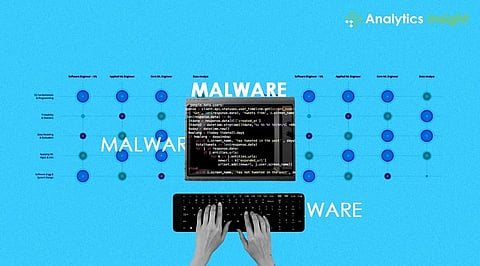

In the fast-paced and ever-evolving landscape of cybersecurity, the persistent threat of malware looms larger than ever. Traditional methods of malware detection, reliant on static signature-based approaches, have become increasingly inadequate in the face of sophisticated and dynamic cyber threats. Recognizing the need for more proactive defense, the cybersecurity community has turned to machine learning algorithms as powerful tools to fortify digital defenses. This comprehensive exploration delves into the crucial role of machine learning in the detection of malware, unraveling the capabilities of five key algorithms that have become the vanguard in the ongoing battle against cyber threats.
As our digital ecosystem expands, so too does the complexity of cyber threats. Traditional signature-based detection methods, while effective against known threats, struggle to keep pace with the rapid evolution of malware variants. Cybercriminals constantly refine their tactics, creating polymorphic malware that can change its code structure to evade detection by signature-based systems. This necessitates a paradigm shift in our approach to cybersecurity, prompting the adoption of more advanced and adaptive solutions.
Enter Random Forest, an ensemble learning algorithm that has proven to be a stalwart defender against the ever-mutating landscape of malware. Random Forest operates by constructing multiple decision trees during training and aggregating their outputs to form a robust and accurate prediction model. Its strength lies in its ability to handle large datasets, maintain accuracy, and minimize overfitting, making it a reliable choice for discerning both known and emerging malware threats.
Support Vector Machines (SVM) stand out as a powerful class of supervised learning algorithms, adept at drawing boundaries between different classes of data. In malware detection, SVM maps data points into high-dimensional spaces, identifying hyperplanes that effectively separate benign and malicious software. The adaptability of SVM to handle both linear and non-linear relationships makes it a formidable tool in the arsenal against cyber threats.
The advent of deep learning has ushered in a new era in malware detection, with neural networks leading the charge. Convolutional Neural Networks (CNN) and Recurrent Neural Networks (RNN) are at the forefront, excelling in feature extraction and sequence analysis. Their hierarchical structure enables the identification of intricate patterns within vast datasets, making them indispensable in detecting even the most sophisticated and evolving malware variants.
Despite its apparent simplicity, Naive Bayes has emerged as a surprisingly effective algorithm for real-time malware detection. Operating on the principles of Bayes' theorem, Naive Bayes calculates the probability of a sample belonging to a particular class based on its features. This straightforward yet efficient approach positions Naive Bayes as a pragmatic choice for scenarios with limited computational resources.
K-Nearest Neighbors (KNN) is a versatile algorithm excelling in both classification and regression tasks. In the realm of malware detection, KNN classifies new data points based on the majority class of their nearest neighbors. While it may have higher computational requirements compared to some algorithms, the simplicity and adaptability of KNN contribute to its efficacy in identifying anomalies associated with malware.
The integration of machine learning algorithms into the cybersecurity arsenal represents a paradigm shift in the battle against malware. The discussed algorithms—Random Forest, Support Vector Machines, Neural Networks, Naive Bayes, and K-Nearest Neighbors—symbolize the cutting-edge technologies that empower cybersecurity professionals in their mission to safeguard digital environments.
As the digital landscape continues to evolve, the collaboration between human expertise and machine learning algorithms becomes increasingly crucial. By embracing these sophisticated technologies, organizations and individuals can fortify their digital defenses and create a resilient barrier against the ever-evolving panorama of malicious software. In an era where cyber threats continue to grow in complexity, the fusion of human intelligence with machine learning stands as a beacon of hope, ensuring the integrity and security of our digital world.
Join our WhatsApp Channel to get the latest news, exclusives and videos on WhatsApp
_____________
Disclaimer: Analytics Insight does not provide financial advice or guidance. Also note that the cryptocurrencies mentioned/listed on the website could potentially be scams, i.e. designed to induce you to invest financial resources that may be lost forever and not be recoverable once investments are made. You are responsible for conducting your own research (DYOR) before making any investments. Read more here.
